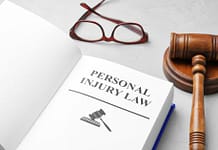In the realms of law and insurance, evidence stands as a cornerstone, playing a pivotal role in substantiating claims, resolving disputes, and ensuring fair outcomes. Evidence gathering is an essential process that involves collecting, preserving, and presenting relevant information or facts to support legal cases and insurance claims. Let’s delve into the significance of evidence gathering, its methodologies, and the impact it holds in bolstering both the legal and insurance sectors.
Understanding the Significance of Evidence Gathering
1. Legal Proceedings:
- Criminal Cases: Evidence serves as the foundation for proving guilt or innocence in criminal trials.
- Civil Litigation: In civil cases, evidence supports claims or defenses, aiding in achieving fair and just outcomes.
2. Insurance Claims:
- Policy Settlements: Evidence substantiates claims, validating losses, and supporting insurance payouts.
- Fraud Detection: Gathering evidence helps in detecting and preventing insurance fraud, ensuring integrity in the system.
Types and Sources of Evidence
1. Physical Evidence:
- Tangible Items: Objects, documents, photographs, or video recordings serve as physical evidence in legal and insurance matters.
- Forensic Evidence: Scientific analysis of physical evidence (e.g., DNA, fingerprints) aids in investigations.
2. Testimonial Evidence:
- Witness Statements: Testimony from eyewitnesses or expert witnesses supports factual accounts in legal proceedings.
- Depositions: Sworn testimonies taken outside of court proceedings contribute to evidence collection.
3. Digital Evidence:
- Electronic Records: Digital data from emails, social media, or surveillance footage serves as crucial evidence in modern cases.
- Cyber Forensics: Analysis of digital footprints and online activities supports investigations in cyber-related crimes.
Methodologies for Effective Evidence Gathering
1. Preservation and Documentation:
- Chain of Custody: Maintaining a documented record of evidence custody ensures its integrity and admissibility in court.
- Thorough Documentation: Accurate and detailed records of collected evidence strengthen its credibility.
2. Forensic Investigations:
- Forensic Experts: Trained professionals conduct detailed examinations and analysis of physical or digital evidence.
- Evidence Preservation: Proper storage and handling of evidence prevent contamination or tampering.
3. Witness Interviews and Statements:
- Interview Techniques: Skilled interviewers obtain detailed and accurate information from witnesses or involved parties.
- Statement Recording: Recording or transcribing witness statements preserve testimonies for legal proceedings.
4. Technological Tools:
- Digital Forensic Software: Tools aid in data recovery, analysis, and preservation of digital evidence.
- Surveillance Equipment: High-quality cameras and monitoring devices capture critical visual evidence.
Role of Network Cables in Evidence-Gathering
Network cables play an essential role in modern evidence gathering, especially in digital forensics and cybercrime investigations.
- Data Transmission: Network cables are the conduits for transmitting data between devices. In the context of law enforcement or insurance investigations, these cables can be a critical part of data collection processes, transferring information from the scene to analysis platforms.
- Surveillance Systems: Network cables also come into play in setting up and maintaining surveillance systems. These systems, often pivotal in gathering visual evidence, rely on network cables for the transmission of real-time or recorded footage.
- Digital Forensics: When investigating cybercrimes or digital misconduct, network cables can hold the key to data trails. Forensic experts may analyze these cables to uncover data exchanges, unearthing key pieces of digital evidence.
- Network Logs: Network cables enable the functioning of internet networks, which in turn maintain logs of data transfers. These logs can serve as crucial evidence in legal or insurance cases, revealing patterns of behavior or pinpointing specific events.
The Impact on Legal Proceedings and Insurance Claims
1. Legal Justice:
- Fair Trials: Comprehensive evidence supports fair adjudication and ensures the right application of justice.
- Case Resolution: Strong evidence often leads to quicker resolutions and informed decisions.
2. Insurance Integrity:
- Accurate Claims Processing: Reliable evidence validates claims, preventing wrongful or exaggerated payouts.
- Fraud Prevention: Evidence-based investigations deter fraudulent activities, safeguarding the integrity of insurance systems.
Challenges and Considerations
- Evidence Preservation: Maintaining evidence integrity, especially in complex or prolonged legal cases, presents challenges.
- Admissibility: Ensuring collected evidence meets legal admissibility standards for relevance and reliability.
- Privacy and Ethical Concerns: Balancing evidence collection with privacy laws and ethical considerations remains crucial.
Empowering Justice and Integrity Through Evidence-Gathering preserve
In both legal and insurance realms, evidence gathering stands as a linchpin, providing the foundation for fair outcomes, informed decisions, and integrity in systems. By employing meticulous methodologies, leveraging modern technologies, and upholding ethical standards, evidence-gathering empowers justice and ensures accuracy in claims settlements.
The role of evidence gathering extends far beyond mere collection—it upholds accountability, transparency, and the integrity of legal and insurance systems. By recognizing the paramount importance of evidence, stakeholders contribute to a robust foundation upon which fair resolutions, accurate assessments, and justice prevail.
In a landscape where evidence is the cornerstone of truth, the commitment to thorough and ethical evidence-gathering becomes a beacon for upholding the principles of fairness and trust within the legal and insurance spheres.








